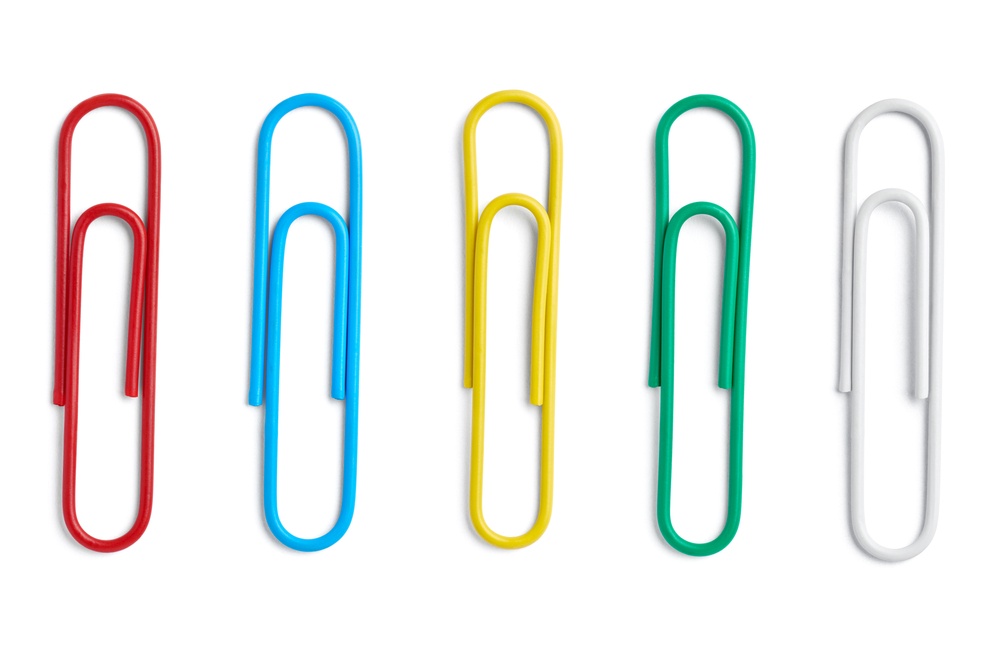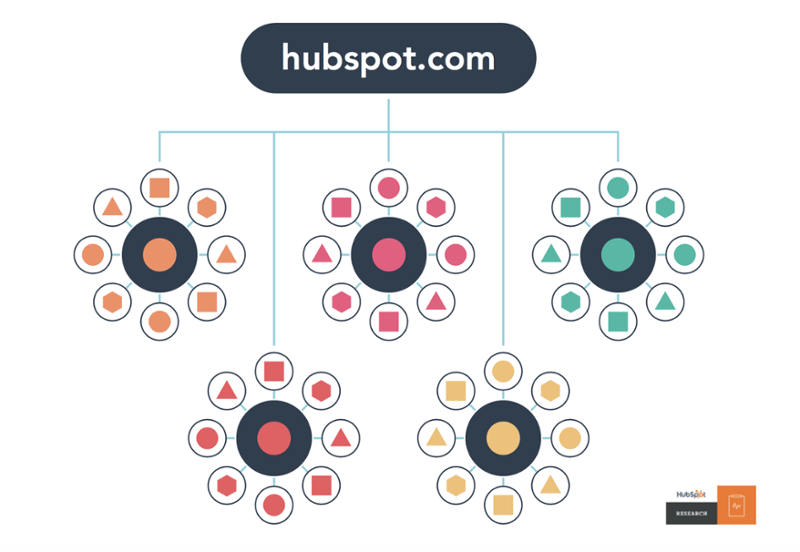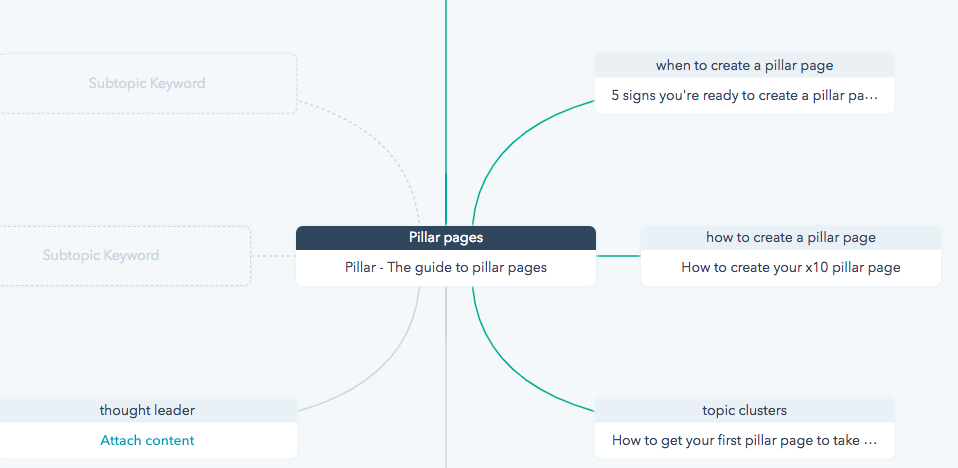
Get weekly
HubSpot updates
Is your bookmark tab uber-organised, with all your bookmarked content in shiny, clearly-labelled files? If so, then I salute you. You are truly an organisational wizard, the kind of which the internet rarely sees. Or are you more of a content-magpie, bookmarking useful blog posts and pillar pages, then forgetting all about them until you end up with a long list of articles that you may never get round to reading?
If you've been hoarding content, then you'll love the resource pillar page. This format offers you the chance to unveil all the fabulous content you've found. It’s no good keeping it merely for your own eyes – share, share, share! The more you spread this useful, fantastic content around – that’s right, promoting other websites other than you own – the more visitors will like and trust you. If you’ve got a bookmarked list of great websites as long as your arm, it sounds like you’re ready to create a resource pillar page.
What is a resource pillar page?
This pillar page style is a hotchpotch of fascinating information from across the web, all in one place, making it a ‘book-markable’ reference page that readers will keep coming back to, rather than reading once and being done with. For example, your topic might be something like ‘House-Searching Tips for First-Time Buyers.’ When setting it up, you would introduce your page, include some nice keywords, but then the bulk of the page will be a long list of links to articles: everything a first-time buyer might need to know about purchasing a house.
This is the less common of the two pillar page types (the other being the x10) because it involves hyperlinking to external content, as well as your own internal resources. This doesn’t guarantee the user will return to your original page. Some people don’t like the idea of a whole webpage dedicated to other people’s content – but bear with us. By curating the absolute top sites from across the web and creating one simple platform to showcase them, Curata explains the advantages you open yourself up to:
- Proving your content has been created by a person, not a computer algorithm
- Being discerning, discriminative and selective
- Adding value. You offer perspective, insight, guidance
- You’re not a one-time event or activity (aka a one-trick pony)
- Informed by a laser focus on your audience.
By using a combination of sources – both your own pages and found content – you are also acknowledging that you aren’t the expert at everything: there are some people out there who are doing a better job than you on certain topics – and that’s okay! Instead of ignoring or trying to hide this fact, you are openly sharing this valuable content with your visitors – and that’s the inbound way.
When to use a resource pillar page
If you have content which is a combination of:
- Organised links to internal and external materials on a core topic
- Lots of great knowledge about useful websites outside of your own
- Sections that are easy to navigate and click on
This isn’t usually a chatty, beautiful, storytelling page – like your far more commonly created x10 pillar page is more likely to be. It isn’t as vital for this page to have videos, infographics, gorgeous photography and interactive elements for your readers to engage with as they proceed through it. This is far more a functional page, almost like a directory. That said, the points from the x10 pillar page post still apply – the quality of writing still has to be great – but it’s not necessary to have the same volume of content.
If you can create clear sub sections by which to divide and organise your website links, this will be really helpful to the reader. A minimum of 20 websites (up to infinity, and beyond) will be needed to start your resource pillar page, if we stick to the first-time house buyers theme for now, you might divide your site links into sections such as:
- Before you start looking for a house
- Tips for saving your deposit
- What to look for in a house
- How to make an offer and what happens next
- The paperwork you’ll need to provide
- Timelines and what to expect
- The final weeks before exchange
- What happens after completion
Beneath each of these sections, you would list a few websites that you think readers will find invaluable to covering that topic – some of these can be your own blog, lead magnets and webpages, but the majority will be reputable, trustworthy sources from across the internet.
Top tip: Along with each link, you could write a sentence or two about why you included that site in your pillar page, who in particular it will benefit and what you love about the advice it offers. By giving this extra personal touch, you not only help guide visitors more clearly in directions relevant to them, but you build great rapport with the owners of those sites by recommending them. In fact, if you reach out to the owners of this content ahead of publishing your pillar page, you might be able to create some exciting collaboration and two-way marketing opportunities across your network in the future.
The advantages and disadvantages of this form
The great things about this type of pillar page are:
- It improves your SEO: you can generate inbound links from the sources you include on the pages that are yours.
- It builds your brand as one willing to help others, constantly thinking about what is best for your customers and prospects.
- It legitimises you as a thought leader in your industry, creating content that potentially most of your peers will not have yet created.
- It provides the opportunity to build working collaborations with others in your industry.
- It helps you organise your own links, instead of them being hidden away on a tab you rarely use – you can use your own pillar page to help you create future content.
The only downsides to this type of pillar page are:
- Your own voice will not come through as strongly as with a x10 pillar page as there simply isn't as much content from you on the page.
- The majority of your content will be hyperlinked elsewhere so this doesn’t guarantee further interest in your own website and product/service.
As a huge collection of interesting and useful bookmarks for your reader, this is the Argos catalogue of the online content world in your particular topic (need ideas for how to pick your topic?). Rather than celebrating your own knowledge and brand voice, it acts as a research project you’ve done on behalf of your audience – who wouldn’t love that?
Like with the x10 pillar-page form, the resource page must be constantly adapted, updated and added to. As the internet changes and evolves, so must your pillar page: it’s no good keeping outdated links – or worse, broken links – on your page. Be sure to revisit and tweak your listed links regularly, ensuring the user experience is smooth for your visitors and you sustain your hard-earned reputation as a helpful, knowledgeable expert in your field.

